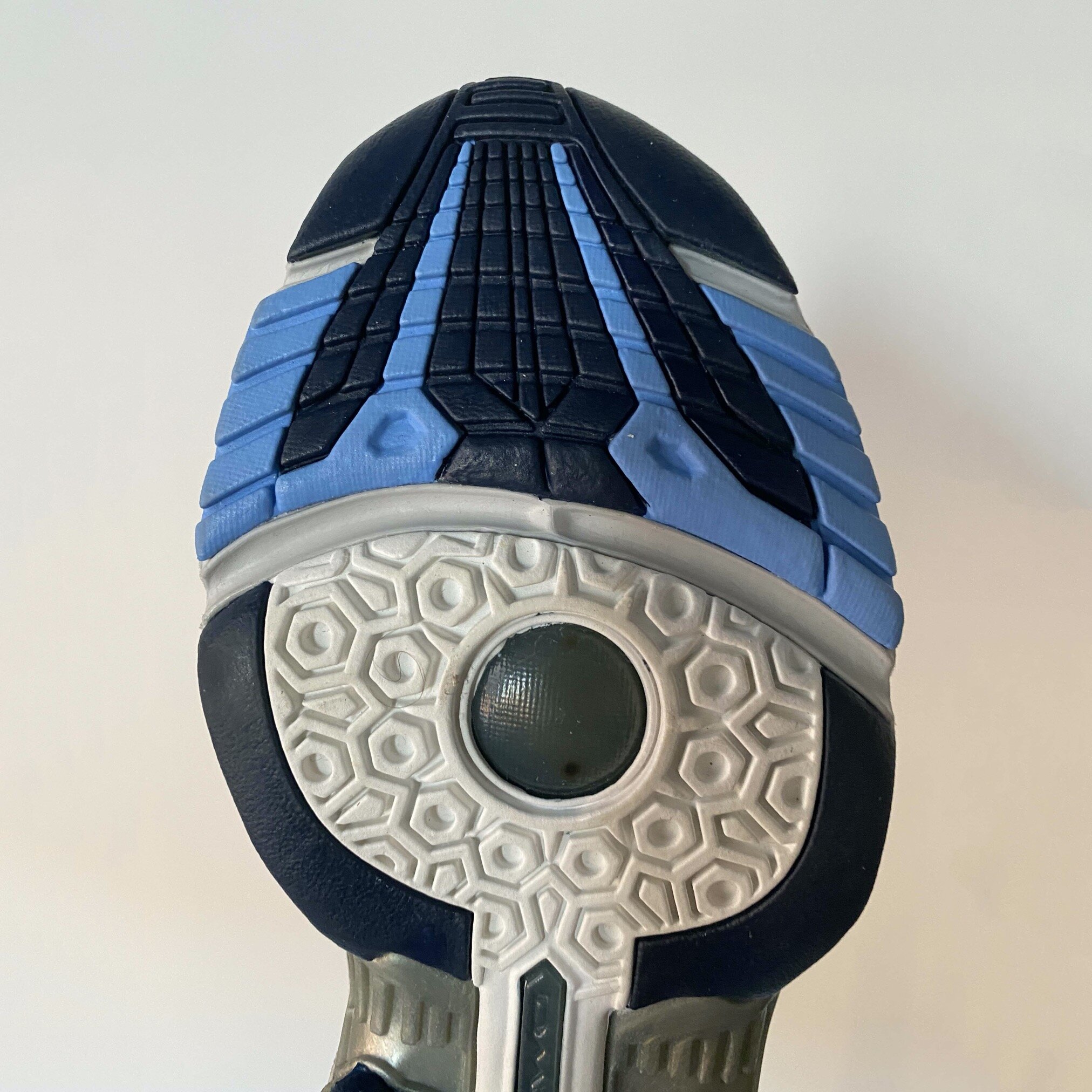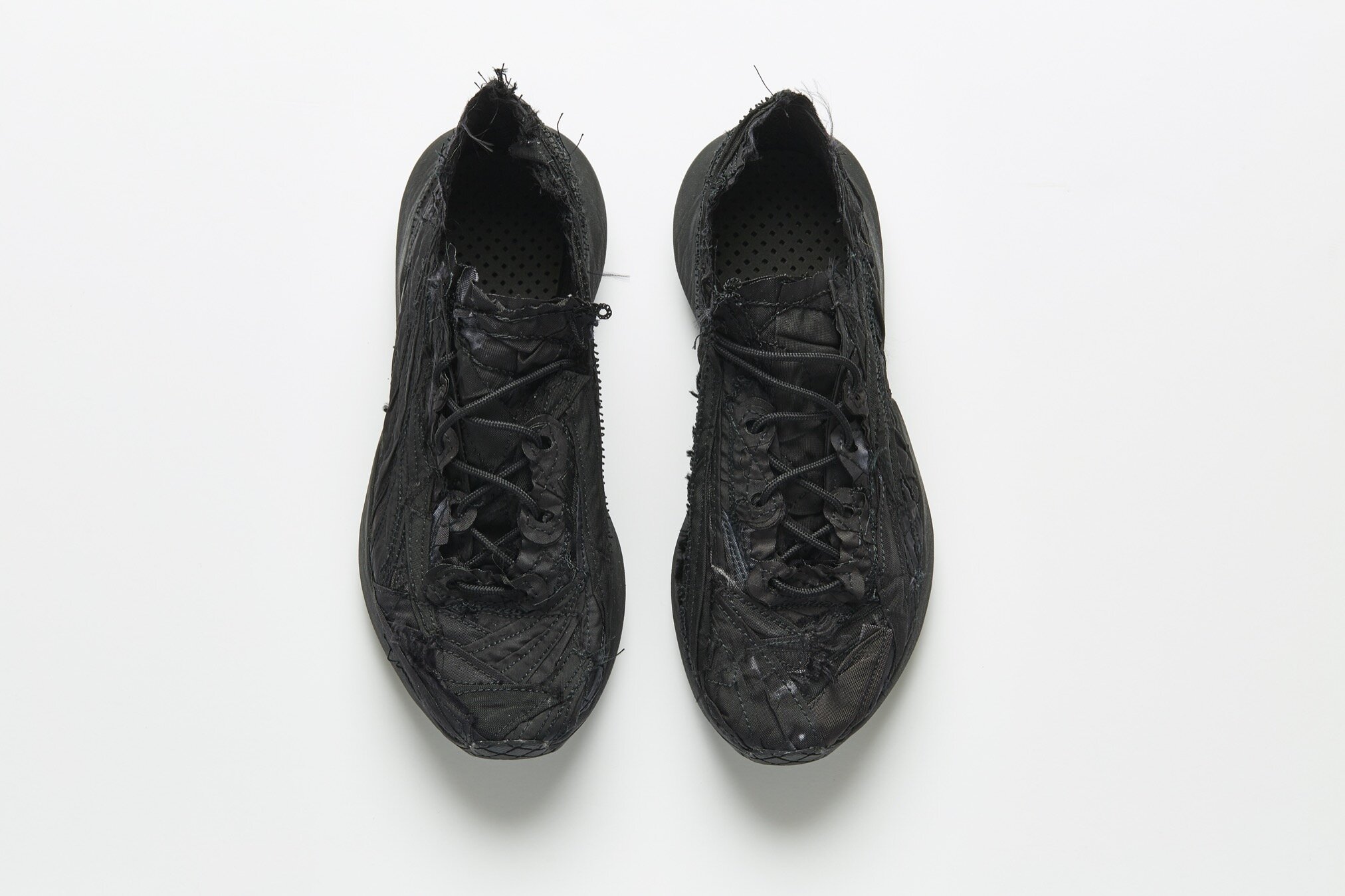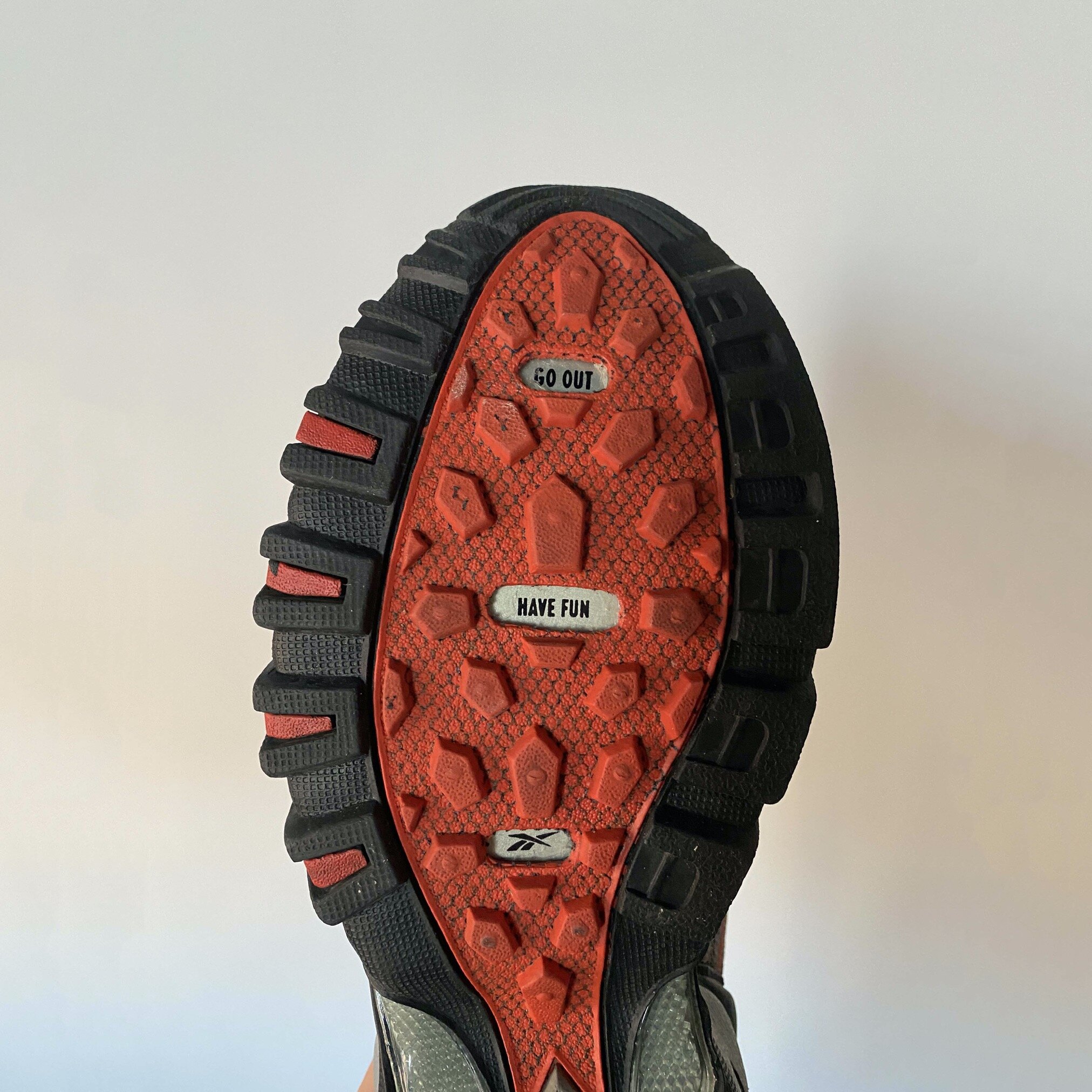From Performance to Runway: A Dive Into The Reebok Archives

For brands like Reebok that have such a long lineage and close relationship to performance technology, where did some of the original or more obscure technologies get their original inspiration from?
Was there always truly a need for the next iteration or improvement? Or was the reason more complex than just wanting to innovate? Average consumers aren’t thinking about the technology supporting the foundation of their sneakers every day - and probably for good reason. In a lot of cases, that technology is working as intended - the fact that you aren’t thinking about it, is a testament to how well it’s working.
How do technology and modernization enhance some of the things we love most? There are clear indicators for industries like modern computing where improvements like efficiency in output delineate huge jumps in performance. But for areas where these improvements are more difficult to measure, or when they’re matched up against non-traditional, sometimes subjective metrics like aesthetic pleasure, how do consumers react?
In some cases, technology even paved the way for real time versatility. A piece of technology that was mind blowing at the time, was Reebok Selectride.
In 2009, Reebok released their new Selectride technology and gave consumers a way to decide how they were going to train - in real time. With a push of a button and an integrated bladder located in the midsole, the built-in heel pump could inflate the midsole for a more comfortable running experience, or you could drain the air out of the bladder and have a shoe much more geared towards training.
Flash forward to today, and the lines between performance technology, runway aesthetic, and archive silhouettes have become more intertwined than they ever have before. The Spike Runner 200 that Reebok teamed up with Vetements on for their FW19, is a perfect example of this. Taking cues from the Reebok Premier Running line, this specific collaboration takes technology normally found in a performance model like the Reebok Kinetic Fit System and applies it to a release that’s normally reserved for a higher fashion distribution.
Let’s think about the base anatomy of a sneaker - every sneaker is at some point a sum of these following basic parts: a midsole, an insole, an outsole, and an upper. When you put them together, these parts can become something that helps the human body control impact response, stretch and flex while remaining stable, or even provide an on-the-fly custom fit. A classic “the whole is greater than the sum of its parts” concept. Exploring what a sneaker is capable of without traditional constraints is what every R&D team dreams of.
This attitude of “fusing archive designs with past stories in order to create a modern product” carries on to today, as we see collaborations with brands like Kanghyuk that allow these brands to fully imprint their DNA onto Reebok products and technology, without sacrificing the core of what that brand focuses on.
Diving into this topic of combining past with present, is something that’s particularly close to us. Knowing how these archive Reebok models were created, contrasted with the manufacturing and design processes of how current models are crafted, afford us insight into what the average consumer is thinking about - from these funky archive models, to the conceptual modern collaborations.
Our good friend Ryan Forsyth, from the Reebok Fashion and Special Projects team (and the mastermind behind the endless dearth of knowledge that is the @vector_language IG page) has agreed to take us on a director’s cut tour of some of the overlooked, forgotten, and otherwise phased out models from the deep Reebok archive while giving us another angle on how Reebok is moving forward.
Ryan - thanks for joining us. Can you tell us a little bit more about the team you sit on in Reebok?
Yeah for sure, thank you for having me! My name is Ryan Forsyth and I am a Global Product Manager for Special Projects at Reebok. The Special Projects team is mainly focused on collaborations between the streetwear or runway spaces, and I sit on the runway side of things. On our side of the team, we focus on collaboration projects with partners who mainly show during major fashion weeks, some of my most recent projects have included KANGHYUK and MOUNTAIN RESEARCH. Another part of my job is working on what we call a “fashion inline” collection, where we create new products and executions for a higher tier level of distribution that is solely Reebok. Some of those models include DMX TRAIL SHADOW, ZIG 3D STORM, and PREMIER ROAD MODERN.
What was the inspiration behind the Zig 3D Storm? What sparked this new silhouette?
Track shoes, with a little bit of road running built in and 1 old Zig shoe. We were trying to think of ways to use the vector logo in a different way, and create a story that made sense. Track shoes utilize this big logo execution over the toe and we thought it was a perfect starting point. The idea was to take these old track inspired ideas, but modernize them with today’s materials, using something that still fits the authenticity of the story. The shoes itself is super light weight using monomesh, and single layer material, something a modern track shoe might use (lightweight is always key).
One of my favorite parts of the shoes is the nod to road running shoes. As a team we did some research on these lacing holes that running shoes have. You will almost always see this extra lace hole on a running shoe that isn’t laced, ever wondered why? It’s actually a technique runners use to create an extra loop to tighten the shoe securely on the foot at the top of the tongue, while still allowing for the rest of the foot to be looser! You can see the little design language there with “Lace Hold”.
Also a little reference to running back in the day is the asymmetrical shoe pocket. These shoe pockets were used before running shorts were designed with little stash pockets, and were used to hold your keys, money,IDs, or even lucky running charms! I remember my mom having some lucky mementos in hers when she ran the NYC marathon haha.
How did the partnership with Kanghyuk come about? What has it been like to collaborate with Kanghyuk on the SRS Sole Fury and Premier Modern?
Kanghyuk has been an amazing partner. They are definitely a duo (Kanghyuk Choi & Sanglak Shon) to look out for, they are on the rise for sure. I remember seeing all of their pieces in their first editorial. All the details of the airbags that they kept and included on the clothes blew our team away. I think it was the first hat that really caught my attention personally because of the hole left by the airbag, but the whole team was in awe! They bring a really cool perspective to the Reebok product.
With certain partners, depending on their aesthetic and brand story it can be tough to bring what makes them unique to a commercialized product, but we were lucky enough to include Kanghyuk in a special project we called “Advanced Concepts” where we included a group of DIY designers to create handmade uppers based on Reebok product and actually had them assembled by hand in our Boston sample lab. This program was super limited to 25 pieces, but it was a way to get Kanghyuk’s vision through on a shoe (i.e. deconstructed airbags), and give Reebok’s shoe a different perspective. The project really speaks to both brands and we have been lucky enough to do this type of program a couple times with them, the next one on the Zig bottom is soon on the way!
The Premier Modern was just another way, at a more commercialized level, to bring their brand to a Reebok product. This execution is actually based off of car tire treads, again tying into their brand idea around car features.
Building off of that - what is the mainline journey between different internal departments to create/concept the “fashion inline” collection? Beyond that, what is the outward collaboration process like for the fashion team as whole, and would you say that one influences the other at all?
A standard product team is composed of product managers, designers, and developers. Our team is tightly knit where we are constantly bouncing ideas off one another. Everyone on the team is a part of the product, and we distort the structured lines of titles during the process, which makes communication and ideas flow easier, resulting in a better end product.
There’s a couple different ways our team works when deciding concepts for the Fashion Inline range. It can either be something the team deems to be ahead of the curve, forward thinking, in the fashion market, or it can be an avenue to highlight Reebok’s current focus. As a team we can offer more extreme takes on products/stories, and use certain materials and techniques because of the elevated distribution we sit in.
When working with partners on collaboration projects, it’s a similar set up as far as team work. We really want to get them involved in the process and understand what we can do, and why we are doing it. Getting the partner’s vision is always the first priority and making sure they understand how we can get there is really valuable for both of us. It’s always super helpful for the partner to visit the HQ to learn about Reebok, understand the process of making it, and seeing things in person. I think that really goes a long way, especially when starting to work together.
it’d be interesting to see how the collaboration process is now, and see if there are any similarities/differences between how collaborations, and overall, how archive pieces were created in the past. Do you think it’s become easier now for brands like Reebok to work and collaborate, or has it become more complicated in a different way?
I think it’s easier in most aspects. As Reebok grows as a brand, so does the culture it sits in, as well as the technology that exists. Collaborations 15 years ago, were definitely around, but not to the extent they were today. The stories and products we are able to execute now are far more diverse than they might have been back in the day. The addition of technology not only in materials, but in manufacturing also, only helps that process evolve to create better products and ideas for both Reebok, and the partners we work with.
What is the toughest part of making a collaboration between brands work? I’m sure that there are already a lot of moving parts, but if there’s one or two things that come to mind for this, what are they?
They have their hurdles like anything, but it’s the end result that keeps you moving forward. Collaboration projects are unique ways to explore different stories and ideas with partners that we believe in, so the final product launch is always the best feeling. With runway’s usually happening twice a year, the biggest sprint is to make a product on time, ready for the show or the shoot.
What’s something you value about Reebok Fashion Inline projects that the average consumer may not notice at a first glance?
There’s a background story to everything! I think that background is something that is not always readily available, and the inspiration behind the details of the shoes are always my favorite part. For me, whenever I look at a new collection from a designer that I’m following, the first impression is usually always aesthetic based. Especially so if you have no background on the collection. And this can go either way, either you like the aesthetic or not.
Once the designer either shares their inspiration/moodboard, you get access to the full press release, or you do your own research, you start to look at the collection again with a different set of eyes. Looking at things maybe you weren’t sure about and you are kind of like, oh wait actually I like that now. I love that feeling of learning haha. This is a similar ethos to some of our shoes, and a main reason why I wanted to start @vector_language. There’s only so much campaigns, press releases and product pictures can do. By understanding the little details, color references, and moodboards, you start to see shoes in a totally different way.
How about for Reebok archive models and the vast swathe of inspiration they draw from? Do you think it’s easier for consumers to make that connection with that narrative more easily than they can with something specifically geared towards an area like runway/fashion?
I think there are two main things you need to take into consideration when building product, authenticity, and story. Whether the product is aimed towards fashion, runway, or streetwear, it has to come from a place of authenticity, and the story needs to follow that. This can be from both an inline or a collaboration perspective. It’s important to dig in the archive, look at the most relevant models of an era, see what the idea was back then, and understand the purpose. The story will fall into place as these initial deep dives happen. This idea of ‘story’ is something that plays into the authenticity of the product, but can range from anything as broad as “track running”, specific as “car tires”, or a combination of ideas like trail+road running.
Do you have a favorite Performance model that wasn’t specifically inspired by a previous silhouette? Can you explain why?
Oh man there are so many haha. The Reebok archive is a special place full of knowledge and inspiration (shoutout to the whole archive team). The premier running era of Reebok is a special time I love. Not only from a design standpoint but that era of shoes was focused so much on performance authenticity and would go on to win awards, especially in 2006 (the premier era started around 2003). For this reason I really love the Premier Trinity KFS (2006 Runner’s World Editors Choice). But another shoe from this era I always think about, is the Premier Control 3. When you start to research running shoes you start to understand certain reasons why components are there, such as 2nd Density cushioning, TPU Shanks, etc. I remember finding this shoe and looking at the medial side and seeing a TPU piece actually lodged into the 2nd density midsole, and the shoe already had a TPU shank with it, so this other TPU piece blew my mind! I always wish I could do something like that again haha.
Speaking of the Reebok archive and taking into consideration your work with @vector_language, what is another archive model that you’d love to see get some more love, or maybe eventually get an updated modern take on?
I think we’d all love to see a comeback of the Armadillo II haha, which is cool to see that archive shoe start to get a little bit of an online cult following. One of my favorite shoes is the Winter Runner 3, which is just an insane boot concept. There are so many elements of that shoe like the shroud, booty insert, and hardware that you can get inspired by, but also could bring back 1:1 and pick up where it left off. If you are paying close attention to some releases coming up, I would watch this space for the future.
About The Authors:
Joseph Wang is a Washington D.C. based storyteller focused on the history and influence that brands have on people, and vice versa. Connecting these stories to his roots, and immersing them with context and close relationships are what he strives for.
Charlie Duong is an Amsterdam based designer and writer. He utilizes fashion, music, and technology as a medium to shed light on individuals, culture, and design thinking.
Credits:
Editorial by Joseph Wang and Charlie Duong
Interview with Ryan Forsyth
Images provided by Ryan Forsyth





















